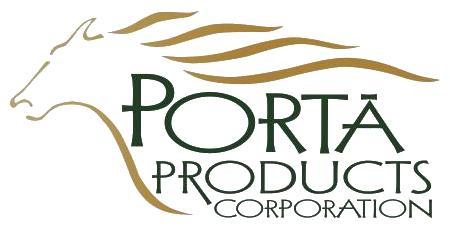Thinking Outside the Box
Porta Products Corp.’s outboard brackets are popular because they work
ERIC COLBY · APR 1, 2020
Most adults look back on their days in high school geometry class and wonder if they are ever going to use the information learned there in the real world. Scott Porta, on the other hand, says it was his favorite class. “I use all that geometry that I learned in high school every day,” says the 61-year-old president of Porta Products Corp. in New Smyrna Beach, Fla.
For 31 years, Porta’s company has made transom brackets for outboard boats, and geometrically speaking, Porta has thought “outside the box” for the design of his accessory. “Because our product moves in a parallelogram fashion, the attitude of the motor doesn’t change,” he says. “That’s critical in the outboard-bracket world because the engines produce their most efficient thrust when the propeller is as close to a 90-degree angle to the water surface as possible. There are many brackets on the market, but few travel as straight up and down.”
Whether it’s used in commercial, fishing or high-performance applications, each Porta Products F-Series (for fishing) and R-Series (for boats running more than 100 mph) bracket has a critical trait. “Ours doesn’t move when the boat is running in bumpy water,” Porta says. “That, in and of itself, is one of the biggest things we’re pushing.”
He says most brackets are “guillotine style,” and can’t keep the outboard from moving around in rougher conditions. “They break, and people lose motors,” Porta says. “They have a tremendous reduction in the load-bearing area where it’s captured on the side rails.”
While most people think of brackets as being used to make a light boat go faster by raising the outboard and reducing friction, brackets also help a heavily loaded commercial boat keep the powerheads from submerging.
The Porta hydraulic bracket is constructed of aircraft-grade aluminum. It has four hinges, and each section pivots on polyethylene bearings. The bracket is equipped with individual Oildyne hydraulic pumps for each engine, and each pump can generate 5,000 pounds of lift. For longevity in salt water, the high-pressure hydraulic lines have Kevlar-braided winding and connect with Aeroquip brass fittings that are nickel-plated.
When his bracket is in the down position, Porta estimates it has more than five times the load-bearing area compared to the competition’s. “As the bracket goes up, you’re asking a lot of it, and ours is engaging more surface area,” he says.
Porta Products offers four brackets. The sizes are: 12 inches of setback and 6½ inches of vertical travel; 17 inches of setback with 12 inches of travel; 21 inches of setback with 15 inches of travel; and 26 inches of setback with 24 inches of travel. The 17-inch model is the most popular, and for a single 200-hp outboard with a 15-inch width, retail price is $2,925. A 17-inch bracket for twin outboards starts at $5,735.
Instead of installing multiple single-engine brackets on a boat, Porta Products custom-builds the bracket for each installation up to five outboards. “We don’t care if it’s the OXE diesels or Seven Marine,” Porta says. “We can raise them all with one button.”
Porta Products builds as many as 10 brackets a week, and the company website says lead time is 15 days. The number of brackets built drops to around five each week if additional work, such as custom paint, is required. Porta estimates that the breakdown between aftermarket and original-equipment business is a 50-50 split. Aftermarket sales are almost all direct retail to the consumer, and brackets can be ordered directly from the company website. Less than 10 percent of the business is commercial, and the majority of the brackets are ordered for fishing applications.
“When somebody calls, we ask their number of motors, horsepower, transom height, shaft length and boat length,” Porta says. He is involved in the conversation on every bracket ordered and built, and says that the two most important dimensions are shaft length and transom height. Porta and his employees confirm the weight of the outboards from a secondary source to ensure the information is accurate.
Another area where Porta Products is seeing an increase in business is repowers. As consumers show they’re willing to spend money on two or three big outboards for a boat, they also see the value in putting them on a bracket that can enhance a boat’s versatility. For boaters who like to run in skinny water, the possibility of running across the bottom only goes up. Porta says an operator can lift the outboard to generate enough thrust to push a boat across a sandbar without damaging the gearcase, even if the hull is contacting the bar.
As outboards get bigger, the ability to spread the load across a larger bracket will become critical. Porta says his product can handle the size and weight. “With these great big motors, we’re the standalone that can handle them,” he says. Of course, he’s speaking geometrically
